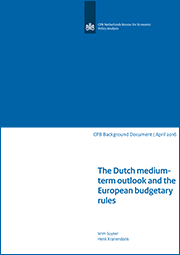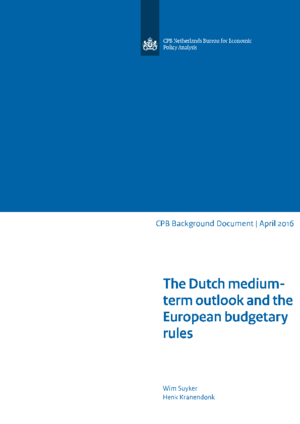The Dutch medium-term outlook and the European budgetary rules

It shows the impact in the Dutch case of moving from a two-year to a four-year forecasting horizon on potential output.
Work on structural budget balances in a medium-term framework was done as part of CPB’s publication on the medium-term outlook for the Dutch economy. This medium-term outlook will serve as the baseline for a coalition agreement after the general elections of March 2017.
GDP volume growth is projected at 1.8% per annum in the years 2018-2021. This gradual moderate upturn leads to a sluggish drop in unemployment. With oil prices no longer falling and the economic recovery continuing, inflation is picking up somewhat. The current account surplus is projected to remain substantial.
The outlook for the government budget is based on unchanged policy. As a consequence, government outlays excluding health care drops as a percentage of GDP. Health care outlays are rising as a percentage of GDP as the projection is based on the long-term trend excluding policy measures and on demographic developments. Nevertheless, total government outlays as a percentage of GDP falls. The tax burden rises somewhat due to social security premiums financing rising cure outlays. The general government budget balance switches from a deficit into a surplus. Gross government debt falls below 60% of GDP.
